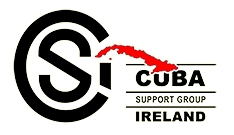
May 15 marked the 65th anniversary of Fidel and his fellow Moncada prisoners release from the Model Prison on Isle of Pines
Last May 15 marked the 65th anniversary of Fidel and his fellow Moncada prisoners release from the Model Prison on Isle of Pines. Cubans had been awaiting the day since of the Amnesty Law was approved, an undeniable victory for the people, which, however, had a “hook” that suited the regime. Fidel’s political imprisonment had its antecedent in the Moncada trial, during which the revolutionary leader himself, in his capacity as both defendant and prosecutor, presented testimony deduced from the accusations he faced, which revealed the dictatorship’s crimes, denounced by survivors and witnesses of the murders.
The Court of Urgency, which heard Case 37 in the Palace of Justice, could not ignore the plaintiff’s request to defend himself. One day that young cultured lawyer, a prisoner in Isle of Pines, reaffirmed his demand in the corresponding court. At the same time, from the prison itself, he made sure the horrendous crimes committed in Moncada and Bayamo were denounced, and wrote a text entitled ‘For suffering Cuba.’ Its publication was entrusted to two women: Haydée Santamaría and Melba Hernández, who had been sentenced to eight months in prison in the Guanajay Women’s Prison, while their defender, Dr. Baudilio Castellano, managed to have their presence during the assault the result of a noble motive, as nurses with Dr. Mario Muñoz, murdered in their presence. That small pamphlet recounted these crimes.
The impact of the pamphlet circulated underground moved all who read it. Fidel then gave Haydée and Melba another responsibility: publishing the his self-defense statement which he improvised at the trial and would reconstruct on the Isle of Pines: History will absolve me. The mission was accomplished. The pamphlet circulated throughout Cuba, reaching even the Sierra Maestra mountains.
This is how this indispensable document denouncing the dictatorship’s crimes and presenting the Moncada program was developed. The people of Cuba, in their immense majority, assumed it as their banner to demand amnesty. This demand became the great battle waged by the people with truth as their weapon.
Politicians wanted to return to the electoral struggle, which the Batista regime was proposing in order to remain in power. But to do so, Fidel and his comrades would have to be freed.
Thus it became indispensable for the two traditional rivals to sign the amnesty law. It was naturally approved with the provision that all accusations and cases be dropped, including those filed against the military for their Moncada crimes.
On May 15, 1955, the combatants were released from prison. They would soon be in Havana. The railway station was overtaken by the people, waiting for the arrival of the train from Batabanó. The press would publish Fidel’s statements: “The national conscience is reborn, to try to drown it will bring an unprecedented catastrophe.” This was the language of the only leader accepted by the majority of the people and who would very soon find it impossible to access a tribune. Then he declared: “The doors to the civil struggle have been closed to me, thus, loyal to Martí, I think that the time has come to take our rights, not ask for them, to grasp them, instead of begging for them.”
And later: “… there is no other solution than that of 68 and 95.” He was only in Havana for six weeks. Then came the Granma expedition, the Sierra Maestra and victory.
source: Granma






